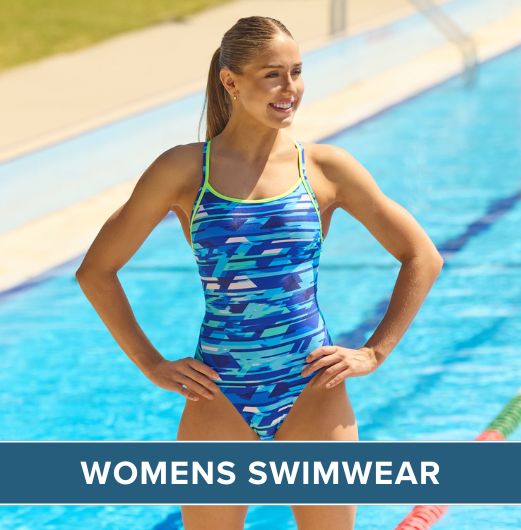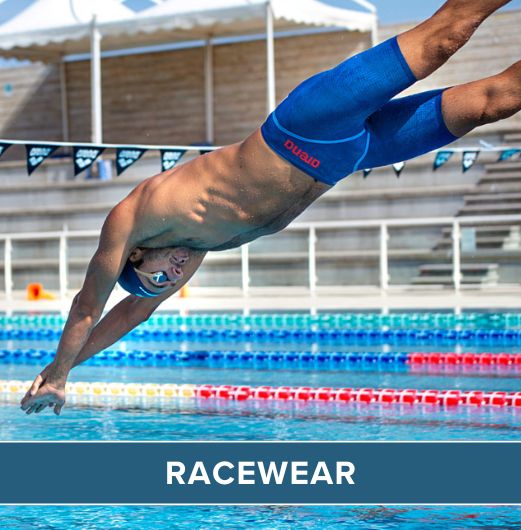If you're looking for a workout to help you build muscles without putting any unnecessary strain on your joints, swimming is the answer. Moving through the water is the ideal way to strengthen and improve the length and flexibility of a whole range of different muscles. The typical “swimmer's body”, with broad shoulders and a toned, flat stomach, shows just how effective this form of workout can be.
However, unlike some other types of muscle-building exercise, swimming is accessible to people with different levels of fitness and across the whole age range. Instead of having to work with weights, which may be daunting for some, you can use the water's resistance to build muscle and fitness, making you feel stronger and healthier.

While swimming is an exercise which benefits the whole body, it can be helpful to know which muscles are being used and worked with each stroke. All swimming strokes do give a workout for the body's main muscles, including abdominal, back, forearm, shoulder and gluteal muscles, as well as hamstrings. But there are important differences between the different styles of swimming in terms of the specific muscle groups.
Mixing the strokes you use during a training session can therefore ensure that you target different areas of the body. To make your water workout as effective as possible, it may also be a good idea to take a look at the stroke techniques you are using and perhaps get some tips from an instructor on ways of fine-tuning your movements.
Freestyle, also known as front crawl, is a great way not only to work out the upper body muscles, but also to strengthen those in the back, torso and abdomen. The crawl arm movement extends swimmers' shoulders and is a good tone-up for the deltoid and shoulder muscles. Reaching forward further as you swim can help to make the stroke more efficient. At the same time, the flutter kick leg action used in this stroke will work your lower body, including the hip flexors and foot muscles.
Backstroke is similar to freestyle in the way it targets a large number of muscles all at once. However, you do not need to use your neck muscles to the same extent by twisting your head to breathe. Like freestyle, backstroke is great for working both the inner and outer abdominal muscles. It also particularly targets the hamstrings, as well as the hip flexors and other lower body muscles.
While it is less strenuous than front crawl or backstroke, breaststroke is still a popular stroke and is often preferred by older or less active swimmers. This stroke can help to exercise the lower limbs, with the kick action working a swimmer's gluteal muscles, quadriceps and hamstrings. The sweeping arm movements, together with the action of lifting your head out of the water to take a breath, will also give a workout to the pectoral muscles in your chest. These movements are simultaneously beneficial to the shoulder and upper arm muscles, including the deltoids, biceps and triceps.
Butterfly might be less popular than the other 3 main strokes, but it is a great workout nonetheless, using more energy than other types of swimming. Like breaststroke, it puts emphasis on the lower body, working the abdominal, lower back and gluteal muscles as you move through the water and lift your body to take a breath. The arm and shoulder muscles also get plenty of exercise with each stroke.
Swimming has a number of advantages as a way of building muscle compared to some other forms of workout. One of the most important is that it is a low impact form of exercise, which doesn't have an impact on your joints and bones, as working with weights can do. Pulling and pushing against the water can build endurance, just as training in the gym would do, but without the same stress on the body.
However, it doesn't have to be a choice between gym and swim, since often these different forms of exercise can work well together. Because it is such good cardiovascular exercise, swimming will help to make other forms of exercise far more effective, by improving your lung capacity and breathing. This means if you are already working out in the gym to build muscle, whether with weights or other types of equipment, taking up swimming will make your existing regime more effective.
It is also possible to make swimming more effective in building muscle by using equipment within the pool. For instance, pro swimmers sometimes use kick boards during a swimming session to help enhance leg and lower body muscular strength. Using these boards means you do not have to worry about working your arms and can concentrate on your leg movements. Training fins can also be used to strengthen leg muscles. Equally, putting a leg float or pull buoy between your ankles or thighs can enable you to swim without kicking your legs, while instead focusing on the arms and upper body muscles. Using paddles can also help to make the upper body muscles stronger, or you could try a combination of paddles and a pull buoy for an even more demanding upper body workout.
Another factor to help build muscle while swimming is to ensure you are getting the right level of nutrition to support your workouts. We've all heard the advice about eating plenty of fruit and vegetables and complex carbohydrates, choosing lean proteins and going easy on junk food. Giving your body the right fuel is, if anything, even more important when taking part in regular exercise, as it will help to make workouts more effective and build muscle rather than fat.
Among all age groups, there is increased awareness of the benefits of getting fit, including improving muscle strength. Swimming is an especially good way of achieving this because it is accessible to everyone, including people with health problems or limited mobility. Working out in water is not only effective, but also great fun.
 Free Tracked UK Delivery
Free Tracked UK Delivery Hassle Free Returns
Hassle Free Returns Next Working Day OPTION
Next Working Day OPTION Found It Cheaper?
Found It Cheaper?













